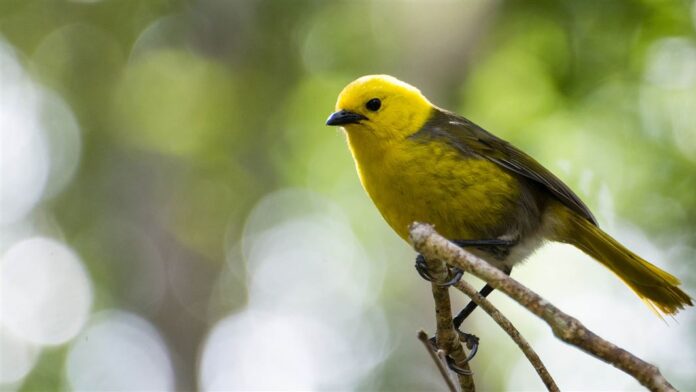Source: Department of Conservation
Date: 14 February 2021
Results from DOC’s bird monitoring in November 2020 show mohua numbers have risen again since the last survey in 2018, with a nearly 35-fold increase in the population since monitoring began 23 years ago. Overall, native bird numbers have more than doubled in this time.
DOC Principal Science Advisor Dr Colin O’Donnell says the once rare mohua remains the most abundant native bird in the valley and six other native birds have also continued their upward trend.
“Mohua have gone from just 14 birds in the survey area prior to predator control, to 485 this year.
“Tūī, korimako/bellbird, pīpipi/brown creeper, tītitipounamu/rifleman, riroriro/grey warbler and kākāriki/yellow-crowned parakeet have also all steadily increased since monitoring began.”
The long-term study measures the response of native and introduced bird species to sustained predator control to suppress rats, stoats, and possums.
“It’s fascinating to visit the Landsborough each year and observe the changes in birdlife,” says Colin O’Donnell.
“It’s uncharted territory in that we don’t know when native bird populations will peak, which is why it’s important to keep tracking progress at this site.”
Populations of four native species remain stable, while two have declined.
Kākā, ngirungiru/tomtit, pīwakawaka/fantail and kererū/wood pigeon have remained stable and not declined as they would have been expected to if predators were unmanaged.
Two species, tauhou/silvereye and the migratory koekoeā/long-tailed cuckoo, have declined. Silvereye may be facing greater competition for nectar from the more aggressive tuī and bellbird.
Long-tailed cuckoo migrate to the Pacific islands each winter and may be being affected by conditions there. They return to Aotearoa to lay their eggs in mohua and brown creeper nests in late spring. The long-tailed cuckoo may have declined or moved elsewhere when their egg-hosts almost died out in the 1990s.
Numbers of introduced birds have also decreased, probably due to greater competition from more native birds.
The massive New Zealand-wide beech forest seeding in 2019 caused a rapid rise in rats in the Landsborough valley. However, DOC’s Tiakina Ngā Manu predator control operation in December 2019 reduced rats and stoats to low levels and protected forest birds as they nested and reared their young last summer.
Background information
Mohua were once common but have been lost from almost all South Island forests due to predators. They are now only found in a small number of forested areas on the South Island mainland but have been successfully established on several Fiordland islands. Outcomes for mohua from predator control at other sites have been mixed. It appears that the effectiveness of aerial 1080 after forest masts (seeding) for mohua depends on which beech species has seeded and how heavily. Best results appear to be achieved if aerial 1080 is combined with trapping for stoats in non-mast years.
Valley-wide predator control began in the Landsborough valley in 1998 after the impact of predators on birdlife was observed. Since then, DOC has done ongoing trapping and seven aerial 1080 operations timed to suppress increasing rat numbers, with the most recent three, in 2014, 2016 and 2019, covering the entire valley.
The Tiakina Ngā Manu predator control programme uses aerial control and large-scale trapping to protect native birds, bats, frogs, lizards and giant land snails at the most important conservation sites across the country. It contributes to Predator Free 2050 by protecting native species until the tools and methods to permanently remove predators are developed.
Contact
For media enquiries contact:
Email: media@doc.govt.nz



